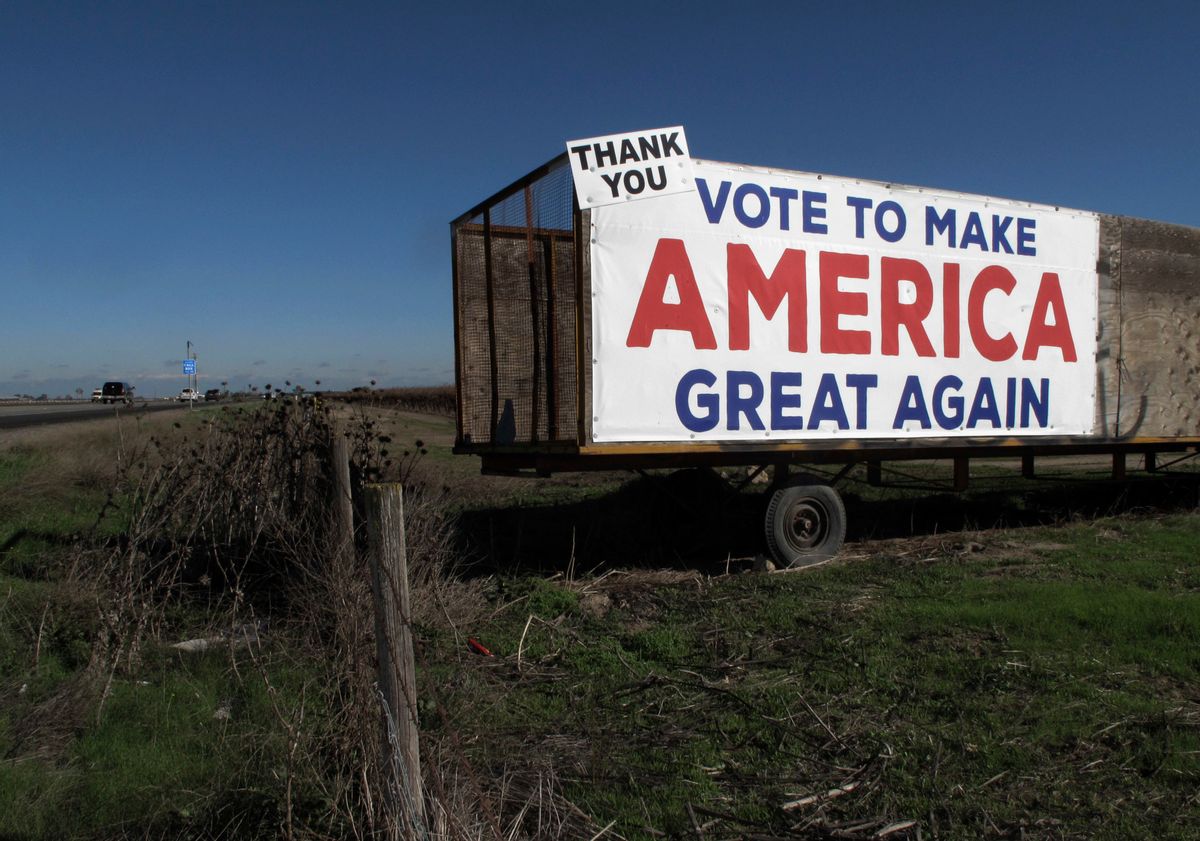On Election Night, President Donald Trump was dealt a sharp rebuke in the region of the country that was arguably responsible for carrying him to victory. In the Midwest, the three key states that flipped to Trump and gave him his Electoral College victory — Michigan, Pennsylvania, and Wisconsin — elected or re-elected Democratic governors, and between them flipped a net six House seats from red to blue.
The danger signs were there for months. Polling in the last few months has shown voters across the Rust Belt were souring on the president. And one of the key reasons might be that he wrote voters in the region a check that they couldn't cash.
Trump campaigned to be the president who would restore the Midwest factory towns to their former glory, and put all the laid off people back to work. He made a show of this in 2016 when Mike Pence, still the governor of Indiana but by then on Trump's transition team, negotiated with air conditioning giant Carrier not to relocate factory jobs to Mexico.
But ultimately, much like the Carrier deal, which ultimately collapsed, Trump's promises to restore the Midwest were empty — and his economic policy has actually hurt the region.
Even a competent president would not be able to replace all the factory jobs that were lost, because most of them didn't actually move overseas, as is the common refrain. Rather, they were automated. That's why U.S. factories are producing twice as much as they did in 1984, but have shed over 5 million jobs since 1987. That's also why Trump's solution, to impose heavy tariffs on our trading partners, has not worked and has in fact killed more jobs by making everything more expensive.
Making matters worse, Trump has done nothing to address other problematic economic trends in the Midwest, including wage stagnation and the decline of unions, which would give the remaining workers greater security.
While economic growth in the Midwest is still positive, it has slowed considerably under Trump. Agriculture has been hit especially hard, with tariffs making it even harder for farmers to profit during a period in which food prices are already low; according to the Associated Press, in the 12 months before June, 84 farms in Wisconsin, Minnesota, North Dakota, South Dakota and Montana have filed for bankruptcy, twice the number as filed in the same period from 2013-2014. The Trump administration even anticipated this, sending a $12 billion bailout to farmers to pay them not to work.
The story is the same in manufacturing. This week, General Motors announced they will be closing two plants in Michigan and Ohio, and laying off 14,700 workers, amid steel tariffs that cost the company $1 billion and a decline in demand for certain types of vehicles. This follows GM's decision to offer a buyout to 18,000 North American workers in late October. And this could just be the beginning — U.S. automakers have warned Trump that steel tariffs will raise the average price of a new car by $5,800, and the ensuing loss of consumer demand could result in thousands more job cuts across the industry.
Trump has had two years to start turning things around for the Midwest. He has failed, and voters have taken notice.


Shares